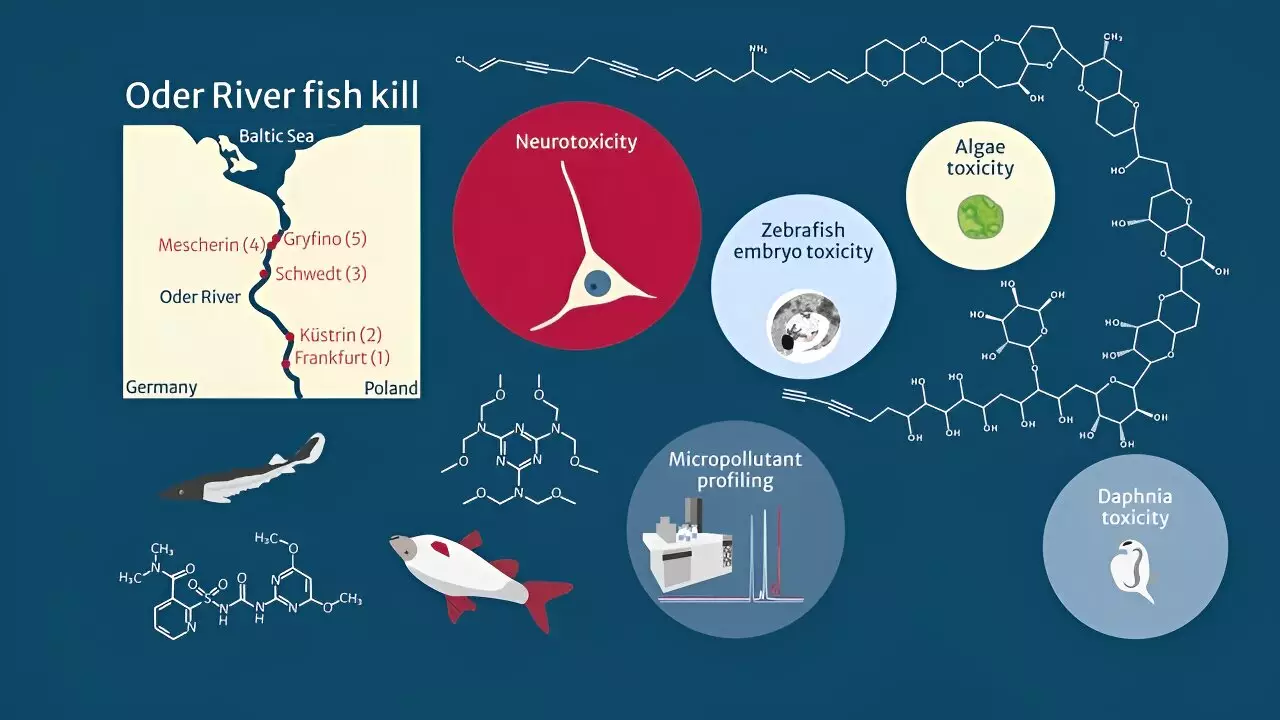The recent environmental disaster on the Oder River, which transpired in early August 2022, has raised significant concerns regarding the health and well-being of the aquatic ecosystem in the German-Polish border river. The calamity, characterized by vast amounts of dead fish, mussels, and snails floating on the surface of the water, has been attributed to a combination of factors such as excessive salinity, high water temperatures, low water levels, and an influx of nutrients and wastewater. These conditions provided a conducive environment for the growth of the brackish water algae Prymnesium parvum, which releases a lethal algal toxin known as prymnesin.
A team of scientists led by the Helmholtz Center for Environmental Research (UFZ) conducted a thorough analysis of water samples collected from the Oder River during the crisis. Their findings, published in Nature Water, unveiled the presence of high concentrations of organic micropollutants in the water, exacerbating the lethal effects of prymnesin on aquatic organisms. The researchers identified over 120 different organic micropollutants in the samples, with substances like flame retardants, polymer additives, and corrosion inhibitors registering the highest concentrations.
The chemical substances detected in the water samples, although not present in unusually high quantities, posed a significant risk to aquatic life when combined with the algal toxins. The researchers utilized a risk quotient (RQ) to assess the potential harm these pollutants could inflict on aquatic organisms. The calculated mixture risk quotients (RQmix) exceeded the threshold value of 1 at all sampling sites, indicating a substantial risk to the ecosystem. Laboratory experiments confirmed the detrimental effects of the chemical cocktails on algae, water fleas, and zebrafish embryos, emphasizing the urgency of addressing the pollution issue.
In vitro assays conducted by the research team revealed the neurotoxic properties of prymnesins and organic micropollutants present in the water extracts. Even at minimal concentrations, prymnesins displayed the ability to impair nerve cell function and induce cell death. Mixture modeling techniques demonstrated that while prymnesins were the primary contributors to the neurotoxic effects, the detected micropollutants also played a role in exacerbating the toxicity levels. This intricate interplay between natural toxins and man-made pollutants underscores the complexity of the environmental crisis on the Oder River.
The implications of the pollution crisis on the Oder River extend beyond immediate environmental concerns. The substantial effects of prymnesins and micropollutants on aquatic organisms not only disrupt the delicate balance of the ecosystem but also pose a threat to human health. The continuous discharge of chemical contaminants into the river further compounds the existing stressors, raising questions about the sustainability of current environmental practices.
The environmental disaster on the Oder River serves as a stark reminder of the detrimental impact human activities can have on natural ecosystems. The findings of the research conducted by the UFZ and collaborating institutions highlight the urgent need for proactive measures to mitigate pollution and safeguard the health of our waterways. As we confront the challenges posed by environmental degradation, it is imperative that we prioritize conservation efforts and sustainable practices to preserve the delicate ecological balance of our planet.


Leave a Reply